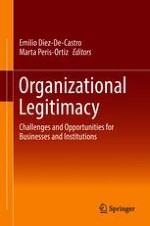2018 | OriginalPaper | Chapter
2. Refocusing Isomorphism to Explain Organizational Legitimacy: A New Approach
Authors : Emilio Díez-Martín, Emilio Díez-de-Castro, Adolfo Vázquez-Sánchez
Published in: Organizational Legitimacy
Publisher: Springer International Publishing
Activate our intelligent search to find suitable subject content or patents.
Select sections of text to find matching patents with Artificial Intelligence. powered by
Select sections of text to find additional relevant content using AI-assisted search. powered by
